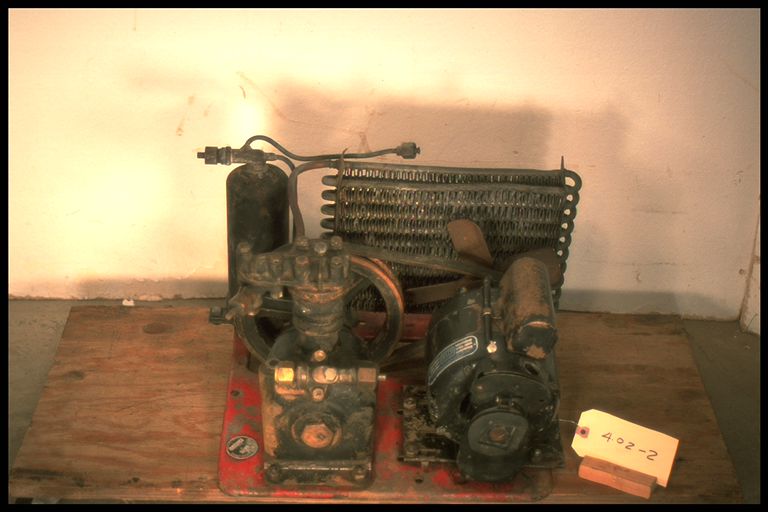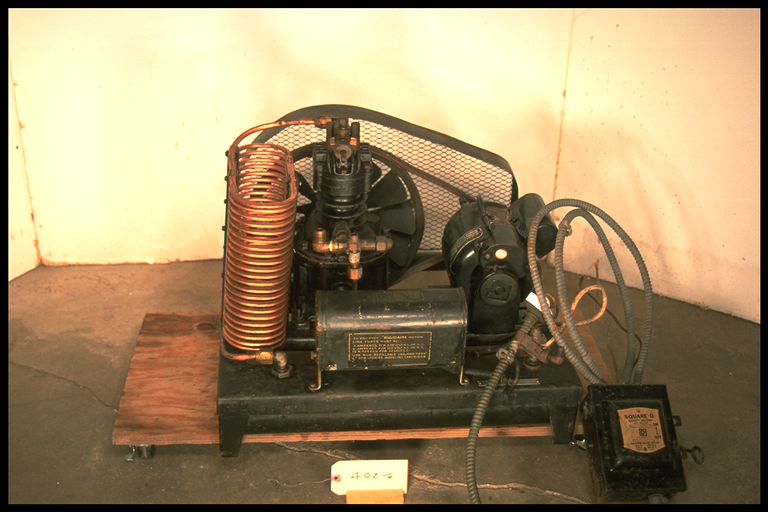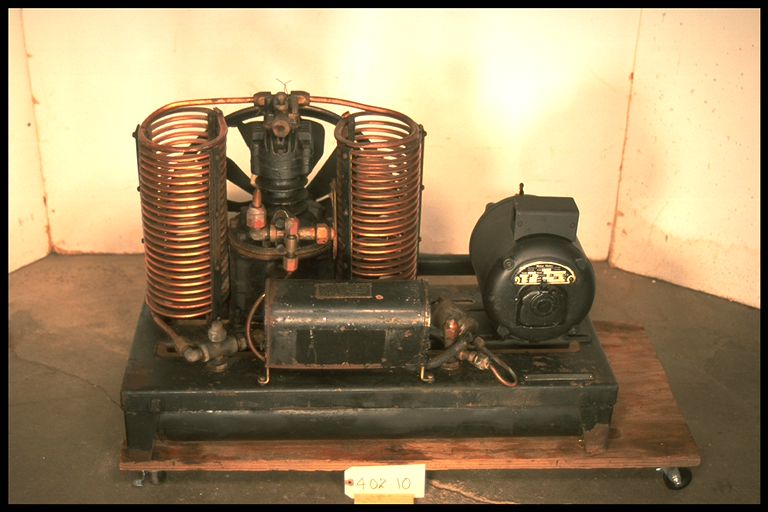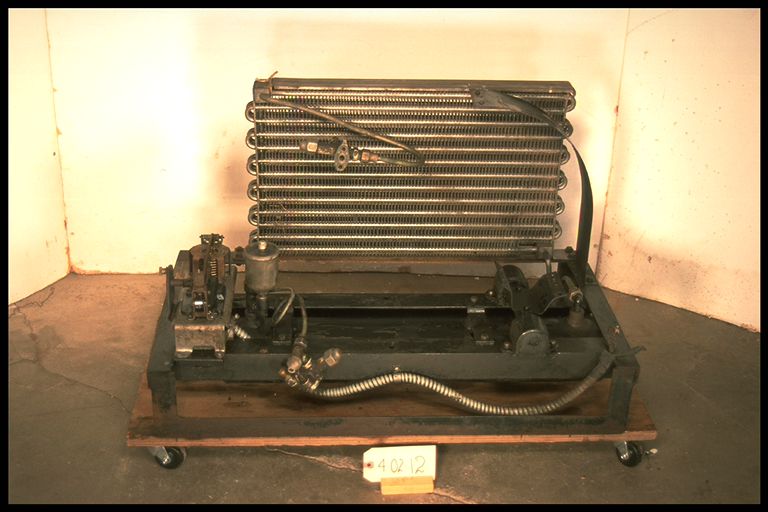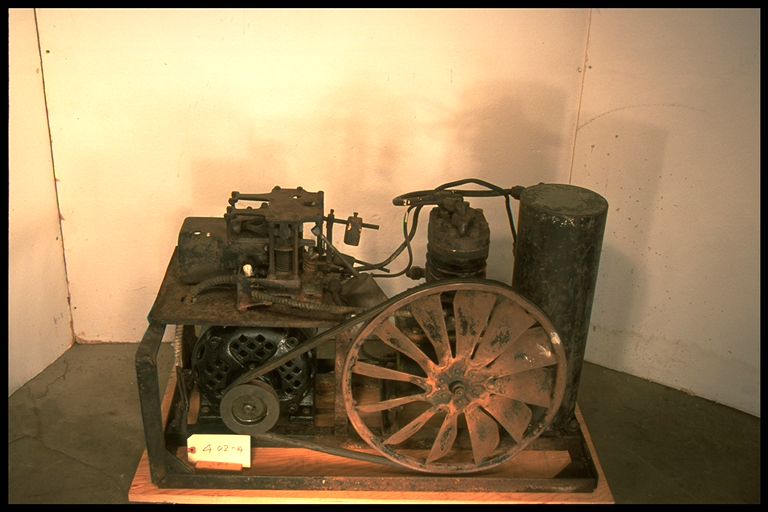4.02-1: Kelvinator 1932 Condensing Unit
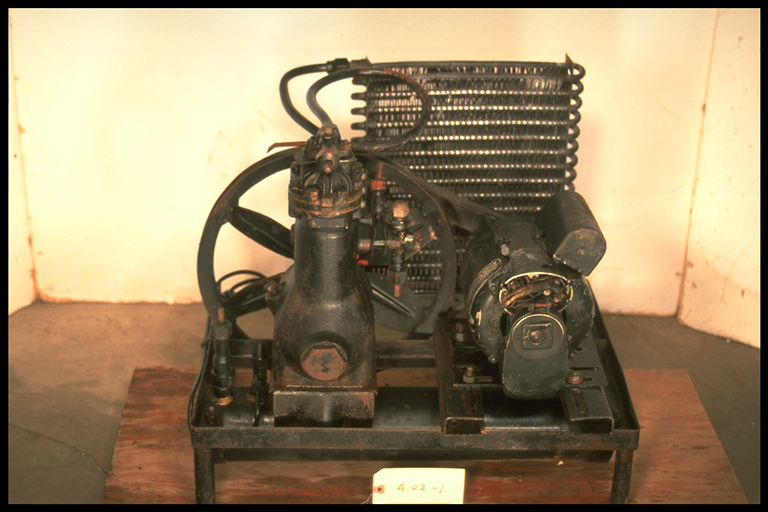
| HHCC Accession No. 2003.040 | HHCC Classification Code: 4.02-1 |
|---|
Description:
An early, commercial application, air-cooled, refrigeration machine [condensing unit] by Kelvinator of Canada designed for use with anhydrous, sulphur dioxide. an early refrigerant that made possible, for the first time, small commercial refrigeration applications in food stores etc. The use of low pressure refrigerants, rather than high pressure anhydrous ammonia, opened up a vast commercial market for refrigeration equipment and, in turn, set new expectations by Canadian consumers of what was available at their local grocer and butcher shop, Kelvinator, circa 1932.
Group:
4.02 Refrigerating and Air Conditioning Condensing Units - Commercial
Make:
Kelvinator
Manufacturer:
Kelvinator of Canada
Model:
Unknown, Compressor Body No. 3147
Serial No.:
Unknown
Size:
23x 17x 21’h
Weight:
120 lbs
Circa:
1932
Rating:
Exhibit, education, and research quality demonstrating the early form and working of a small commercial application refrigeration machine in Canada, designed for low pressure refrigerants, here sulphur dioxide [S02}
Patent Date/Number:
Provenance:
From York County (York Region) Ontario, once a rich agricultural hinterlands, attracting early settlement in the last years of the 18th century. Located on the north slopes of the Oak Ridges Moraine, within 20 miles of Toronto, the County would also attract early ex-urban development, to be come a wealthy market place for the emerging household and consumer technologies of the early and mid 20th century.
This artifact was discovered in the 1950’s in the used stock of T. H. Oliver, Refrigeration and Electric Sales and Service, Aurora, Ontario, an early worker in the field of agricultural, industrial and consumer technology.
Type and Design:
Construction:
Material:
Special Features:
Accessories:
Capacities:
Performance Characteristics:
Operation:
Control and Regulation:
Targeted Market Segment:
Consumer Acceptance:
Merchandising:
Market Price:
Technological Significance:
Industrial Significance:
Socio-economic Significance:
Socio-cultural Significance:
Donor:
G. Leslie Oliver, The T. H. Oliver HVACR Collection
